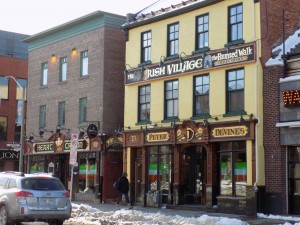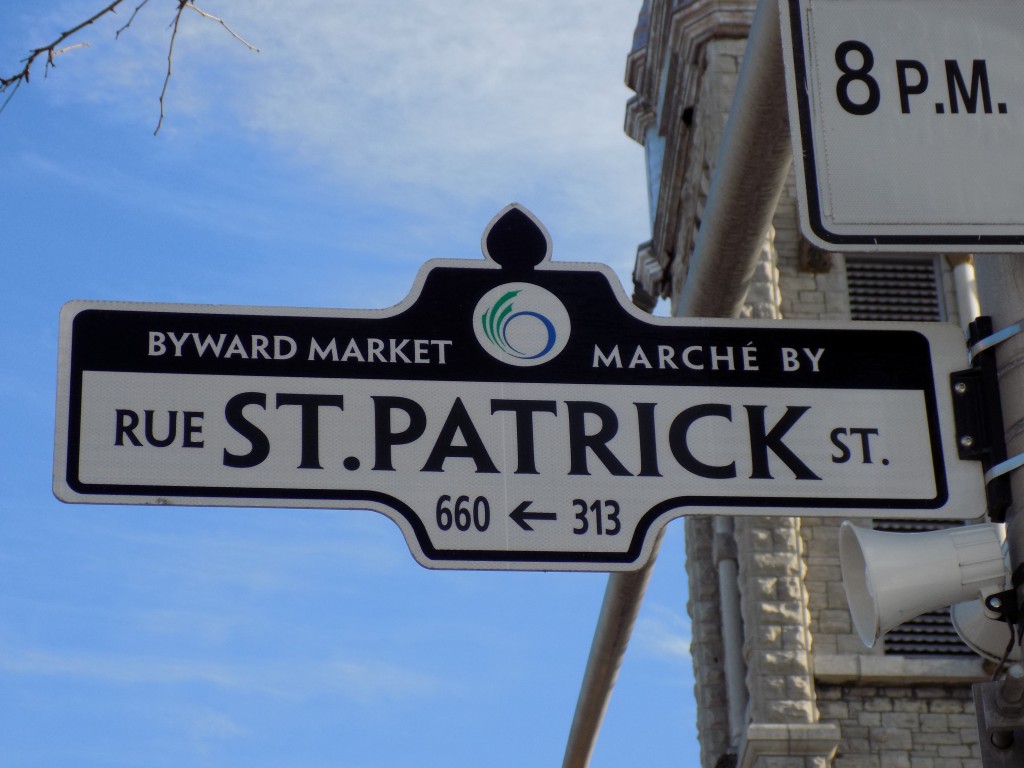Irish roots run deep in Canada
There’s more to St. Patrick’s Day than cheap beer dyed green in a plastic cup. Irish heritage runs deep in Canada and is a big part of the history and culture. The most recent census numbers show that over 4.5 million Canadians are of Irish background. Thomas D’Arcy McGee, one of Canada’s “Fathers of Confederation” was Irish. He was killed in 1868 and is the only Canadian politician to ever be assassinated. The Rideau Canal was built by thousands of Irish immigrant laborers between 1826 and 1832. In Bytown, which became Ottawa, the Irish lived in neighborhoods like Corktown, which was along the Rideau Canal just south of Laurier Avenue. The modern Corktown Bridge across the canal is named in its memory. Lower Town, the area north of the By Ward Market, was also home to many Irish immigrants. St. Patrick Street is one of the main roads in the neighborhood. However, the many Irish-themed bars in the By Ward Market area are much more recent additions, made to look old and quaint, but really products of the past 20 years and designed for tourists.

The “Irish Village” area on Clarence Street in the By Ward Market is a series of Irish-themed pubs. Photo: James Morgan
Outside of Ottawa, the Irish influence is huge, too. A look at a road map of eastern Ontario shows communities with names like New Dublin and Kilmarnock. Irish fiddle music and dancing is still a major tradition northwest of Ottawa in Renfrew County. The Irish have been a major presence in Ontario, with thousands arriving there after the devastating potato famine in Ireland in the late 1840s. Poverty and prejudice unfortunately continued for many though in Canada. Catholic-Protestant religious and political tensions from Ireland continued in Canada for decades. In some communities, these divisions were evident into the late 20th Century.
Irish heritage is very strong in Quebec, going back to at least 1700. The largest number however began arriving after the famine. Thousands of them caught typhus on the long, cramped, and unsanitary voyage across the Atlantic. They were quarantined on Grosse Ile, an island in the St. Lawrence east of Quebec City. Many of the migrants died during the trip, and an estimated 3,000 more died after they arrived on the island. There are 5,000 Irish migrants buried in the Grosse Ile cemetery and the island is now a National Historic Site. Griffintown became the historic Irish neighborhood in Montreal. Brian Mulroney was Prime Minister of Canada from 1984 to 1993. He is from Baie Comeau, Quebec and is of Irish heritage. In 1985, he famously (or infamously?) sang “When Irish Eyes Are Smiling” on stage with President Ronald Reagan at what became popularly known as their “Shamrock Summit” in Quebec City. Mulroney recently reprised the act in a serenade of current President Donald Trump at his Florida estate.
Irish Canadians have made a big impact on popular culture too. Canadian folk music contains many Celtic influences, especially in Newfoundland, another province with strong Irish heritage. The Irish Rovers began in 1963 when four Irish immigrants in Toronto formed what ended up being one of Canada’s most popular folk groups. One of their biggest hits was a rendition of “The Unicorn,” written by poet Shel Silverstein.
The Irish have contributed to Canada in every way. They are a part of the national story.
Tags: canada, heritage, St. Patrick's Day








